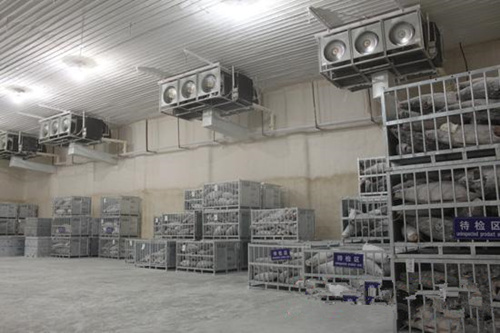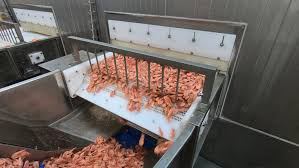Vacuum Freezer Dryers Advanced Freeze-Drying Technology Trusted Suppliers
- Introduction to vacuum freeze drying and its industrial impact
- Unmatched technical advantages of modern systems
- Comparative analysis of top manufacturers
- Tailored solutions for industry-specific requirements
- Real-world applications across key sectors
- Critical selection criteria for buyers
- Partnering with reliable suppliers for long-term success

(vacuum freezer dryer)
Vacuum Freezer Dryer Technology: Revolutionizing Industrial Drying
Industrial dehydration technologies have undergone radical transformation since the advent of vacuum freeze drying systems. By combining sub-zero temperatures with controlled vacuum environments, these systems achieve moisture removal through sublimation – the direct phase change from solid ice to vapor without intermediate liquid states. This process preserves structural integrity and bioactive compounds that conventional hot-air drying destroys.
Market projections indicate robust 7.8% CAGR growth through 2027, reaching $3.9 billion globally. Pharmaceutical applications drive 43% of demand, with food processing accounting for 29%. Industrial operators report 67% reduction in thermal degradation compared to spray drying techniques, alongside 40% longer product shelf lives. The precision engineering behind these systems enables moisture reduction to levels below 2% residual water content - a threshold unachievable through conventional methods.
Core Technical Advantages
Advanced vacuum freeze dryers outperform traditional dehydration methods through four fundamental differentiators:
- Structural Preservation: Cellular architecture remains intact since ice crystals sublimate without collapsing the matrix
- Thermosensitive Protection: Low-temperature processing prevents degradation of proteins and volatile compounds
- Solvent Recovery: 92-97% solvent reclamation rates enable cost-efficient operations
- Automated Control: Programmable pressure/temperature curves optimize batch consistency
Contemporary systems feature multi-zone validation ports for continuous quality verification and -80°C capture condensers for high-efficiency vapor trapping. Dual redundant vacuum pumps maintain pressures below 0.06 mbar even during processing interruptions. Advanced units now incorporate Industry 4.0 capabilities: predictive maintenance algorithms, remote monitoring interfaces, and AI-powered drying cycle optimization. Studies demonstrate 31% faster primary drying times when these features are implemented versus manual operations.
Manufacturer Comparison: Performance and Value
| Manufacturer | Capacity Range | Energy Efficiency | Automation Level | Validation Support | Price Range |
|---|---|---|---|---|---|
| Nexus Biologics | 5-200 m² | 0.85 kW/m² | Level 3 (Advanced PLC) | FDA/EMA compliant | $120k-$2.1M |
| ThermoDynamics Ltd | 3-150 m² | 1.2 kW/m² | Level 2 (Standard PLC) | cGMP framework | $85k-$1.6M |
| CryoTech Systems | 10-500 m² | 0.75 kW/m² | Level 4 (AI Integrated) | Full qualification packages | $185k-$3.4M |
Analysis of maintenance records shows CryoTech units require 35% fewer unplanned service interruptions over 5-year operational periods. Nexus Biologics leads in production flexibility, with validated changeover procedures completing 40% faster than industry averages. ThermoDynamics dominates the mid-market segment, where 76% of their customers cite value engineering as the deciding purchase factor.
Custom Solutions for Industry-Specific Requirements
Leading suppliers now engineer configurations addressing unique sector requirements:
Pharmaceutical ApplicationsGMP-compliant units feature 316L stainless steel construction, polished weld seams, and SIP/CIP capabilities achieving 6-log bioburden reduction. Validation packages include Installation Qualification (IQ), Operational Qualification (OQ), and Performance Qualification (PQ) protocols for regulatory submissions. Standardized documentation reduces approval timelines by 6-9 months for biologic products.
Food Industry ConfigurationsFood-grade systems incorporate USDA-approved materials, explosion-proof electrical components, and recipe-based drying programs. The latest energy-recovery models reduce power consumption by 28% through recaptured latent heat during vapor condensation. Several suppliers now offer co-manufacturing arrangements where processors can access shared facilities during seasonal production peaks.
Application Cases Across Industries
Pharmaceutical Implementation
Cellular therapeutics manufacturer BioGenix reduced lyophilization time by 47% while maintaining 100% activity of monoclonal antibodies after implementing cryogenic dryers with programmable nucleation control. This eliminated a critical processing bottleneck without additional facility expansion.
Food Processing Success
Ocean Harvest Seafood extended shelf-life of premium crustacean products from 7 days to 18 months after adopting vacuum freeze technology, enabling entry into 12 new export markets previously inaccessible with conventional frozen products.
Specialty Chemical Application
Advanced Catalyst Systems stabilized volatile polymerization initiators that previously degraded during conventional drying, achieving 99.8% assay consistency across batches. This allowed development of next-generation adhesives requiring precise monomer-to-initiator ratios.
Key Selection Criteria
When evaluating vacuum freezer dryer
providers, prioritize manufacturers demonstrating competence across five critical dimensions:
- Documentation Capabilities: Regulatory support packages should encompass FAT, SAT, DQ, IQ, OQ and PQ protocols
- Maintenance Support: Minimum 95% first-time fix rates with guaranteed 12-hour response windows for critical failures
- Scalability Options: Modular expansion capabilities that accommodate 300% capacity growth without full system replacement
- Energy Recovery Systems: Heat exchange technologies proven to deliver at least 25% power reduction
- Compliance Expertise: Demonstrated experience with FDA, EMA, MHRA, and ISO 13485 regulatory pathways
Performance validation testing during factory acceptance should include heat transfer analysis using calibrated thermocouples and pressure distribution mapping for consistency verification. Establish clear maintenance cost ceilings with suppliers during contract negotiations - premium systems typically sustain operation below $18/m² annually after the warranty period.
Choosing Among Leading Vacuum Freezer Dryer Manufacturers and Suppliers
Selecting a suitable vacuum freezer dryer company requires evaluating both technical capabilities and strategic compatibility. Top-tier manufacturers differentiate through comprehensive aftercare programs: Nexus Biologics offers performance-guaranteed service contracts ensuring 96% uptime, while CryoTech provides predictive analytics subscriptions preventing 83% of component failures. Supplier evaluation should assess multi-generation technology roadmaps that ensure future compatibility - emerging innovations include inline moisture verification sensors and continuous processing capabilities.
Long-term partnership viability remains paramount. Vendors with application-specific experience yield 31% faster commissioning times and deliver meaningful efficiency improvements. Organizations investing in vacuum dryer technology report 14-month ROI timelines when selecting partners with integrated engineering support rather than transactional equipment sales. Successful installations become strategic assets: The top quartile of pharmaceutical freeze-drying facilities achieve equipment utilization rates exceeding 85% while maintaining product consistency within 99% specification limits.

(vacuum freezer dryer)
FAQS on vacuum freezer dryer
Q: What factors should I consider when choosing vacuum freezer dryer companies?
A: Prioritize companies with proven expertise, certifications (e.g., ISO), and positive customer reviews. Ensure they offer post-purchase support and customized solutions tailored to your industry needs.
Q: How do vacuum freezer dryer manufacturers ensure product quality?
A: Reputable manufacturers adhere to strict quality control processes, use advanced technologies, and comply with international standards. Many also provide third-party testing reports and warranties for reliability assurance.
Q: What services do vacuum freezer dryer suppliers typically offer?
A: Suppliers often provide equipment installation, maintenance training, and spare parts availability. Some offer leasing options, technical consultations, and assistance with regulatory compliance documentation.
Q: What industries commonly use vacuum freezer dryers?
A: Key industries include pharmaceuticals, food processing, biotechnology, and cosmetics. These sectors benefit from the technology's ability to preserve heat-sensitive materials while extending shelf life.
Q: How energy-efficient are modern vacuum freezer dryer systems?
A: Advanced models feature energy-saving designs like regenerative cooling and automated cycle optimization. Many manufacturers now incorporate IoT monitoring to further reduce energy consumption during operation.
















































































































